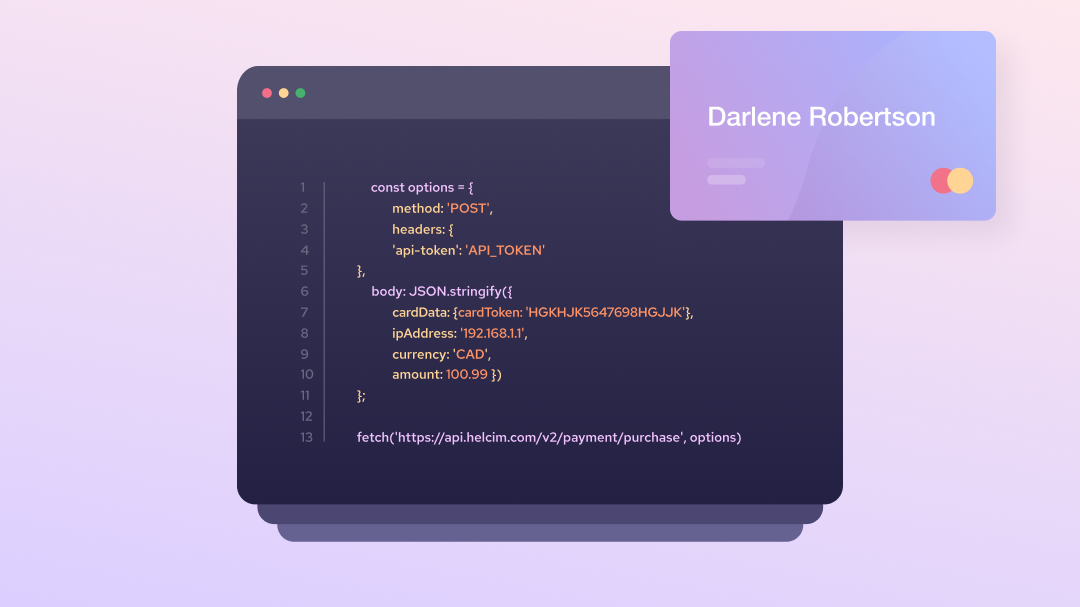Overview of the Helcim API
Integrate with the Helcim API to process payments and access other Helcim functionality within your existing website or application.
You can use the Helcim API to integrate payments and other aspects of the Helcim system into your application or website. The API can also be used to retrieve, create, or modify a number of data objects beyond payments, including customers, card batches, invoices, and transactions.
The Helcim API is grouped into several subcategories as outlined in our API reference documentation. Each of these have a different use cases and allow you to execute different functions in the Helcim system.
- The Payment API endpoints enables you to process credit card payments through your website or application. Payment types include, Purchase, Preauthorization, Capture, Verify, Refund, and Reverse. In addition to processing payments, you can retrieve transactions, and retrieve and settle card batches.
- The Invoice API endpoints enable you to create, retrieve, and update invoices. API functions include Get invoice, Get invoices, Create invoice and Update invoice.
- The Customer API endpoints enable you to create, retrieve, and update customers and view and update customer payment information. API functions include Get customer and Get customers, Create customer, Update customer, as well as functions to get existing card and bank account information linked to customer objects.
- The ACH Payment API endpoints enable you to process ACH bank payments through your website or application, as well as retrieve and modify a number of objects related to ACH bank payments. Payment functions include, Withdraw, Refund, Void, or Cancel.
- The Smart Terminal API enables you to process in-person credit card or debit transactions through your existing third-party point of sale system, connected to a Helcim Smart Terminal. Payment types include, Purchase and Debit Refund transactions.
- The Recurring API enables you to set up recurring payment plans and subscribe customers to those plans through your website or existing software. You can create, retrieve, update, and delete a range of payment plan, subscription, and add-on objects in the Helcim system.
Let's get started!

Technical overview
The newest version of the Helcim API brings our API endpoints up to a modern REST standard that is familiar to developers.
When using the Helcim API there are some important technical points to take into consideration. Outlined below we'll cover some of these points and where appropriate we will link to relevant documentation to help you integrate with Helcim smoothly.
- Only requests authenticated by a valid Helcim API token will be accepted by any API endpoint.
- The Helcim API will only accept requests sent from your website or applications secure back-end server.
SSL / TLS ciphers
Helcim API calls are made over HTTPS (port 443) and the connection is secured using an SSL certificate with a SHA256 key. To adhere to strong PCI-DSS standards we've disconnected weak connections and ciphers, including SSLv3, TLS1.0 and TLS1.1.
Below is a complete list of allowed ciphers:
EECDH+ECDSA+AESGCM
EECDH+aRSA+AESGCM
EECDH+ECDSA+SHA384
EECDH+ECDSA+SHA256
EECDH+aRSA+SHA384
EECDH+aRSA+SHA256
EECDH
EDH+aRSAUpdated 11 months ago